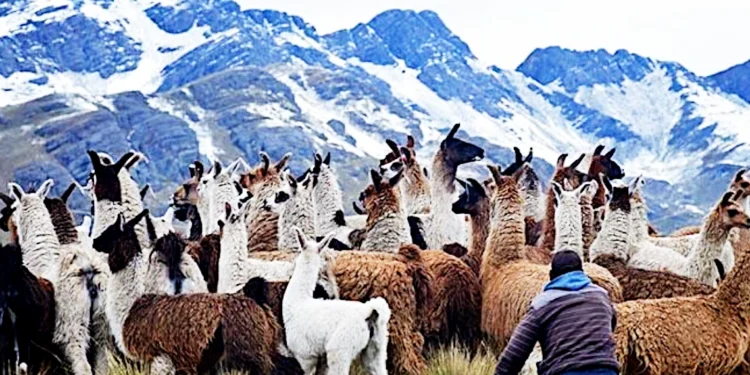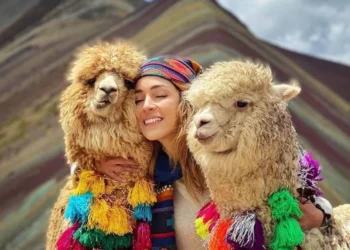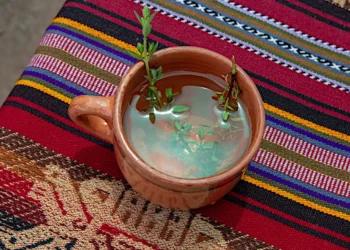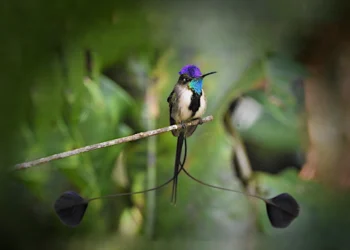This post is also available in:
Español
Nederlands
High up in the mountains, where the air is crisp and the earth seems closer to the stars, live creatures that have accompanied Andean civilizations for centuries. Alpacas, llamas, vicuñas, and guanacos are not just animals; they are symbols of the deep connection between the peoples of the Andes and the nature that surrounds them. These camelids, with their intelligent eyes and slender bodies, are much more than mere mountain dwellers: they are guardians of history, ecological balance, and the traditions of an ancient region.
Since ancestral times, alpacas, llamas, vicuñas, and guanacos have been silent companions of Andean civilizations. Each, with its own spirit, beauty, and purpose, has woven its story alongside the men and women who learned to respect them.
Through this article, we will explore the differences and similarities among these fascinating species, their importance in the daily lives of the Andean peoples, and how their presence remains essential both culturally and economically in Peru, Bolivia, Chile, and Argentina. If you’ve ever heard of these animals without knowing exactly what sets them apart, this is the perfect time to uncover their secrets and their unbreakable bond with the land of the Incas.
What Are the Andean Camelids?
The Andean camelids are a family of animals native to South America, adapted to live at extreme altitudes where few other beings can survive. Their importance is not only ecological; they have been fundamental to the economic, spiritual, and cultural life of Indigenous peoples for thousands of years.
There are four main species:
- Alpacas
- Llamas
- Vicuñas
- Guanacos
Although they may look similar at first glance, each has unique traits that distinguish them.
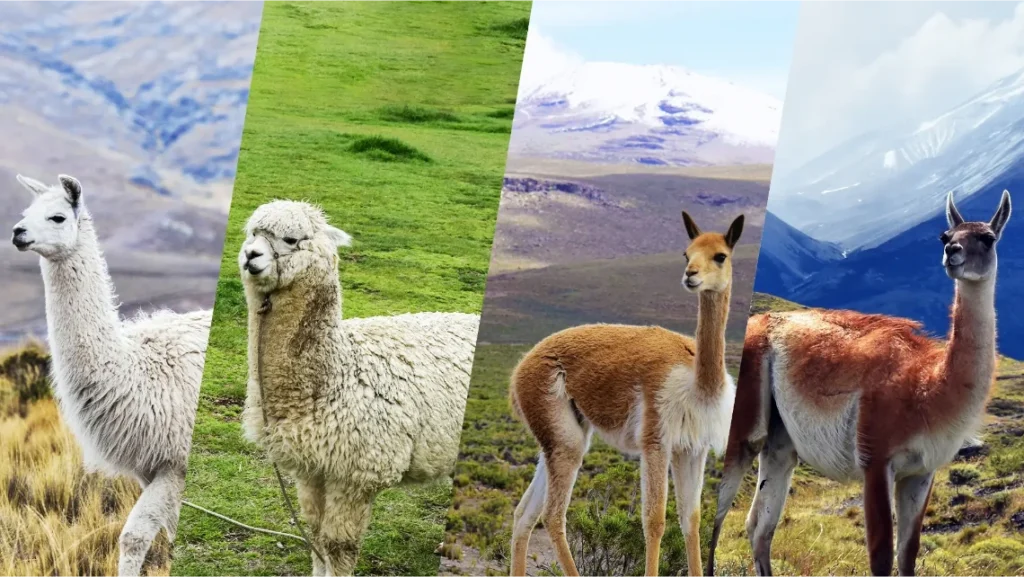
The Key Differences: Alpacas, Llamas, Vicuñas, and Guanacos
The Andean camelids are a family of animals native to South America, adapted to live at extreme altitudes where few other beings can survive. Their importance is not only ecological; they have been fundamental to the economic, spiritual, and cultural life of Indigenous peoples for thousands of years.
Alpaca: The Jewel of the Andes
The alpaca (Vicugna pacos)
often the best-known outside the Andes, is undoubtedly the queen of wool. With its soft and fluffy fleece, this camelid is primarily bred for its fiber, one of the finest and warmest in the world. Unlike the llama, the alpaca is smaller and has a calmer personality, making it an ideal animal for wool production.
Key features:
- Small to medium size (around 1 meter tall)
- Round, woolly face
- Small, pointed ears
- Very dense, soft, and warm wool
- Not used as pack animals
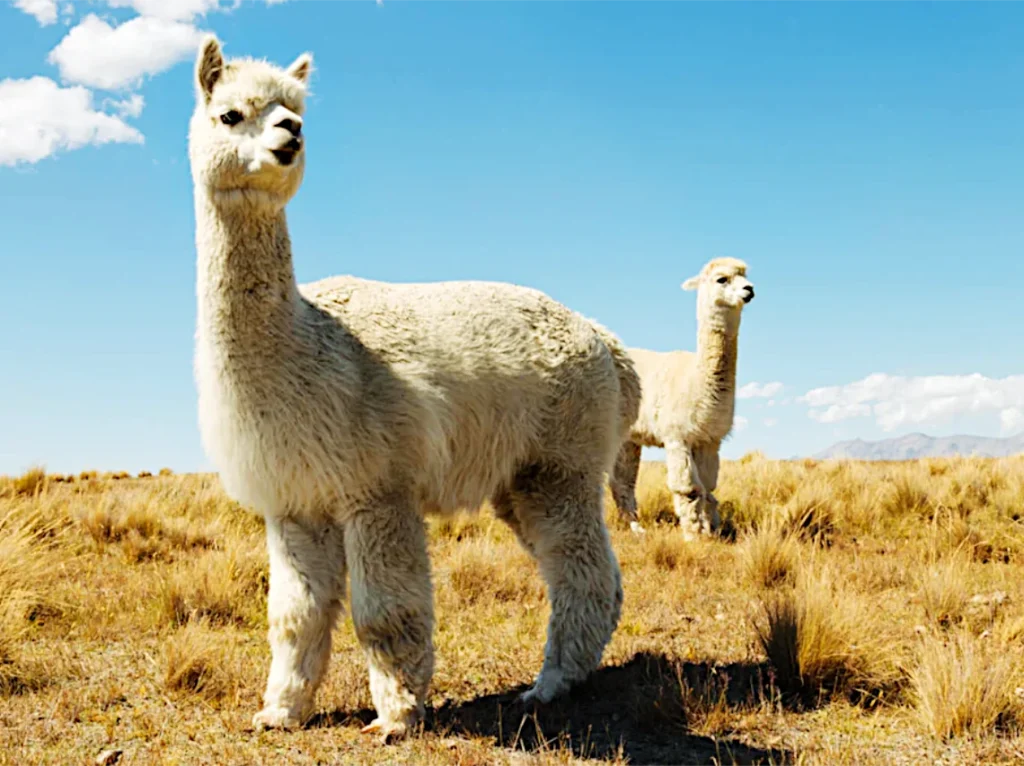
Fun fact:
Alpaca fiber is considered lighter and warmer than sheep’s wool. The alpaca fiber industry in Peru has grown tremendously in recent decades.
Llama: The Faithful Companion of the Roads
The llama (Lama glama) is the most robust and the one most closely associated with daily human activities. For centuries, it served as the “truck” of the Andes, carrying goods and connecting isolated villages through intricate mountain paths. With its imposing stature and independent spirit, the llama has been the faithful companion of Andean peoples for millennia. Although it resembles the alpaca in many ways, the llama is much larger and has less dense fur, making it better suited for carrying loads rather than wool production.
Key features:
- Larger size (up to 1.2 meters tall)
- Long, banana-shaped ears
- Less dense fur compared to the alpaca
- Can carry up to 25-30 kilograms
- Independent, sometimes stubborn personality
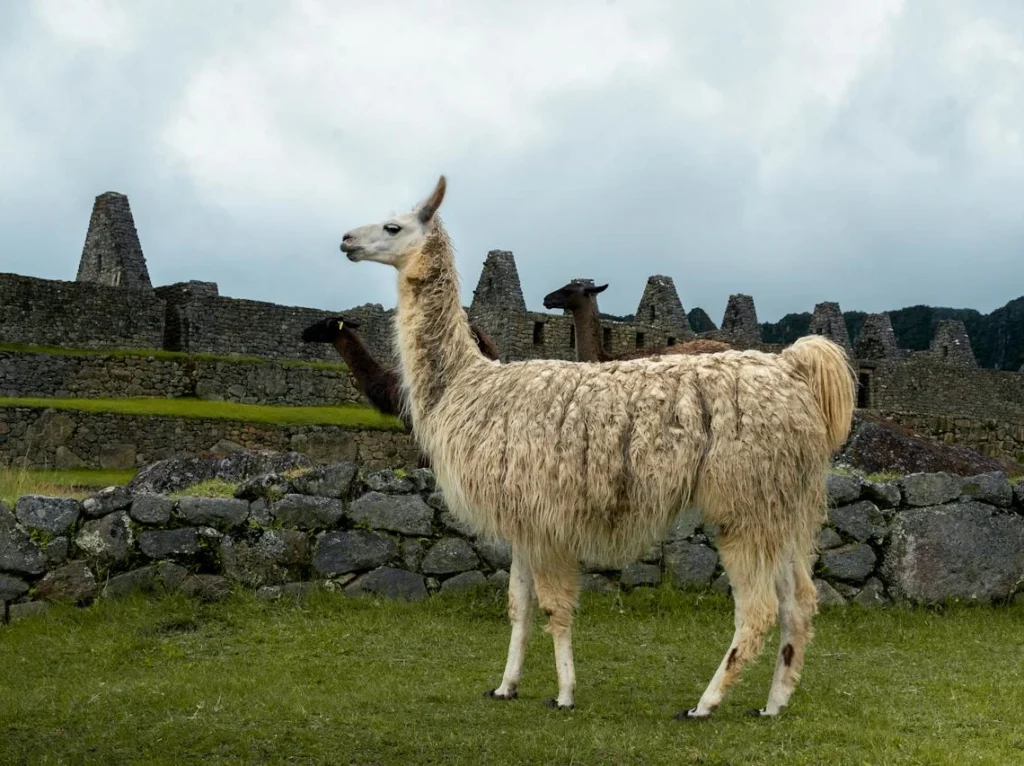
Fun fact: If a llama feels threatened… it will spit! However, they mostly do this to establish hierarchy among themselves.
Vicuña: The Wild Treasure of the Andes
The vicuña (Vicugna vicugna) is a wild, delicate, and elastic creature, considered a national symbol of Peru. Its wool is the finest and most valuable in the world and was reserved solely for Inca royalty for centuries.
The vicuña is perhaps the most elegant and elusive of all camelids. Its slender body and velvet-like fleece make it highly prized. Although vicuñas were historically hunted for their fine fibers, today they are protected by laws regulating their capture. They live wild on the high plains of the Andes and, thanks to their ability to survive extreme conditions, are seen as symbols of resilience.
Key features:
- Very small and slender size
- Short, extremely fine golden and white fleece
- Extremely agile and fast
- Lives wild at altitudes above 3,500 meters
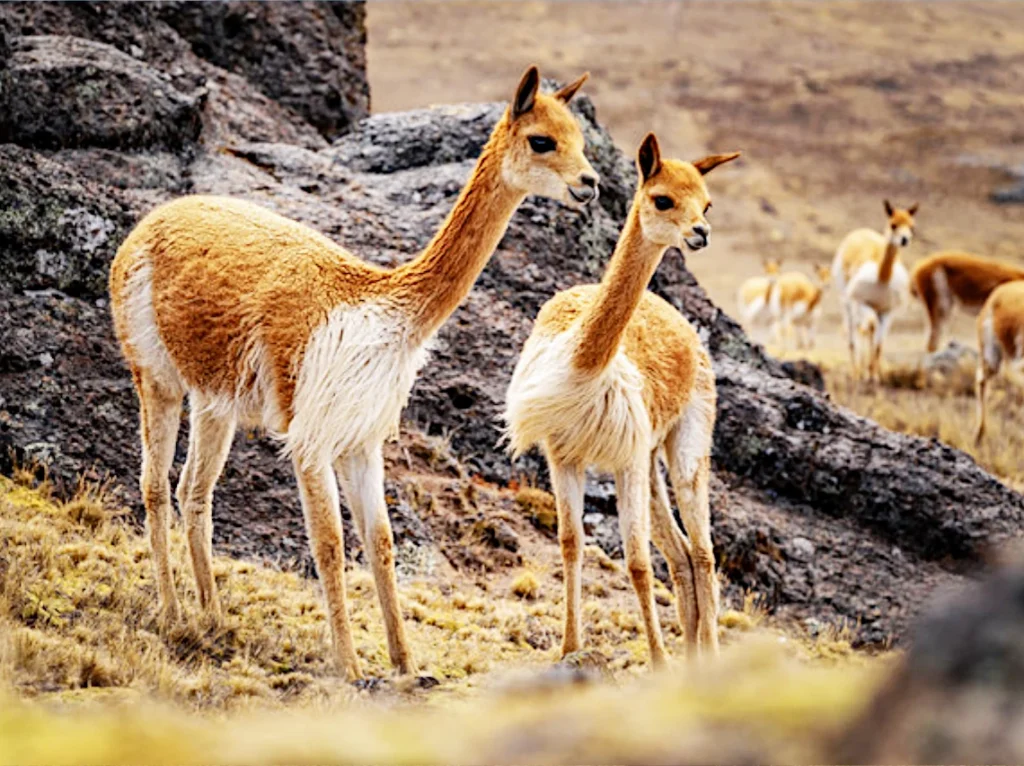
Fun fact:
Vicuña wool is so precious that shearing them requires a community ritual called “Chaccu,” which respects the animals’ welfare.
Guanaco: The Free Spirit of South America
The guanaco (Lama guanicoe) although less known outside South America, is the wild cousin of the llama. It inhabits the driest and coldest regions of Patagonia and other parts of Argentina and Chile. Unlike the vicuña, which is mainly found in the Peruvian Andes, the guanaco is more resistant to extreme temperatures and rugged terrain, making it well adapted to the region’s harsh conditions. The guanaco embodies freedom itself: resilient, agile, and wild.
Key features:
- Medium height (similar to a llama but more slender)
- Short, rustic fur
- Extremely reserved character
- Lives in small herds
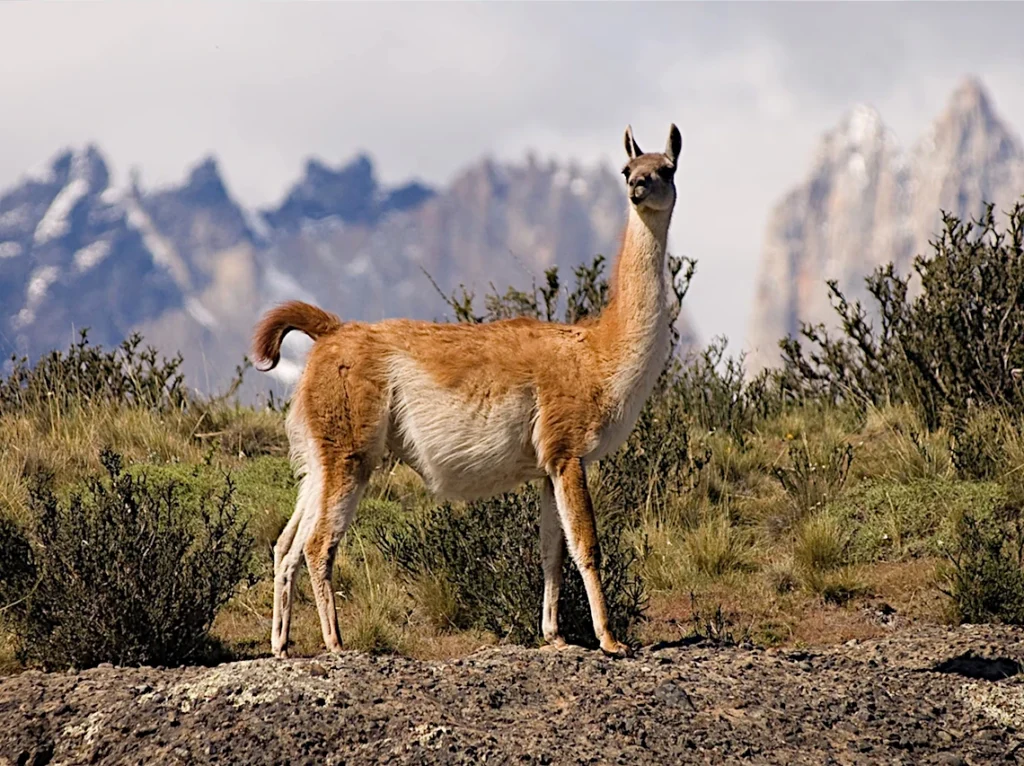
Fun fact: Guanacos can survive for long periods without drinking water, obtaining moisture from the plants they eat.
Quick Overview of the Differences
| Characteristic | Alpaca | Llama | Vicuña | Guanaco |
|---|---|---|---|---|
| Status | Domesticated | Domesticated | Wild | Wild |
| Size | Small | Large | Very small | Medium |
| Wool | Very fine | Regular | Extra fine | More rustic |
| Main use | Fiber | Carrying and fiber | Fiber | Fiber and meat |
| Personality | Calm | Firm | Cautious | Wild |
The Deep Bond with Andean Culture
Since pre-Inca times, Andean camelids have been more than just resources; they have played a crucial role in the mythology and daily life of Andean peoples. In some communities, the alpaca is considered a “sacred animal” that represents the connection with the gods and nature. Additionally, during various Andean celebrations, such as the Festival of the Candelaria in Puno, llamas and vicuñas are honored in rituals of gratitude to Pachamama (Mother Earth).
This spiritual and cultural bond with camelids remains strong, and more tourists and scholars are becoming interested in observing these creatures in their natural habitats. They are symbols of resilience and adaptation, teaching us valuable lessons about the harmonious relationship between humans and nature.
Ecological and Economic Importance Today
In modern times, Andean camelids continue to be a pillar of the Andean regions’ economy. Alpaca wool, for instance, is exported worldwide and used to make luxury products such as clothing, rugs, and blankets. Guanacos and vicuñas also have a place in the fiber market, although in a more restricted way due to their protected status.
From an ecological standpoint, camelids play a vital role in the Andean ecosystems, as their grazing habits help maintain the balance of high-altitude plant life. Their ability to graze without destroying the land helps preserve biodiversity in the region’s most fragile areas.
A Bond That Endures Through the Centuries
Alpacas, llamas, vicuñas, and guanacos are not just animals; they are living symbols of a history that stretches back to ancient times. Their presence continues to be vital for life in the Andes, and their legacy endures not only in the mountains but also in the Peruvian culture that honors and cares for them with respect.
If you ever have the chance to walk through the Andes, stopping before these majestic creatures will be an experience that connects you with a deep history full of mysticism and ancestral wisdom.
Fascinated by the world of Andean camelids?
Leave us a comment below and share this article with your friends so more people can discover the mystery and beauty of these ancestral creatures!
Also, if you’re interested in learning more about Peruvian culture and the secrets of the Andes, subscribe to our newsletter to receive exclusive articles directly in your inbox.


